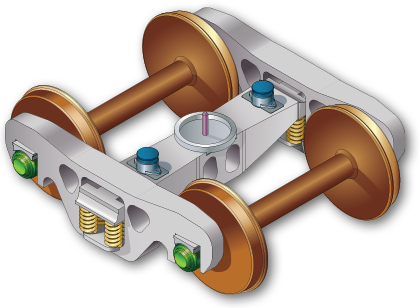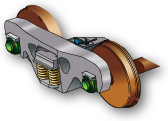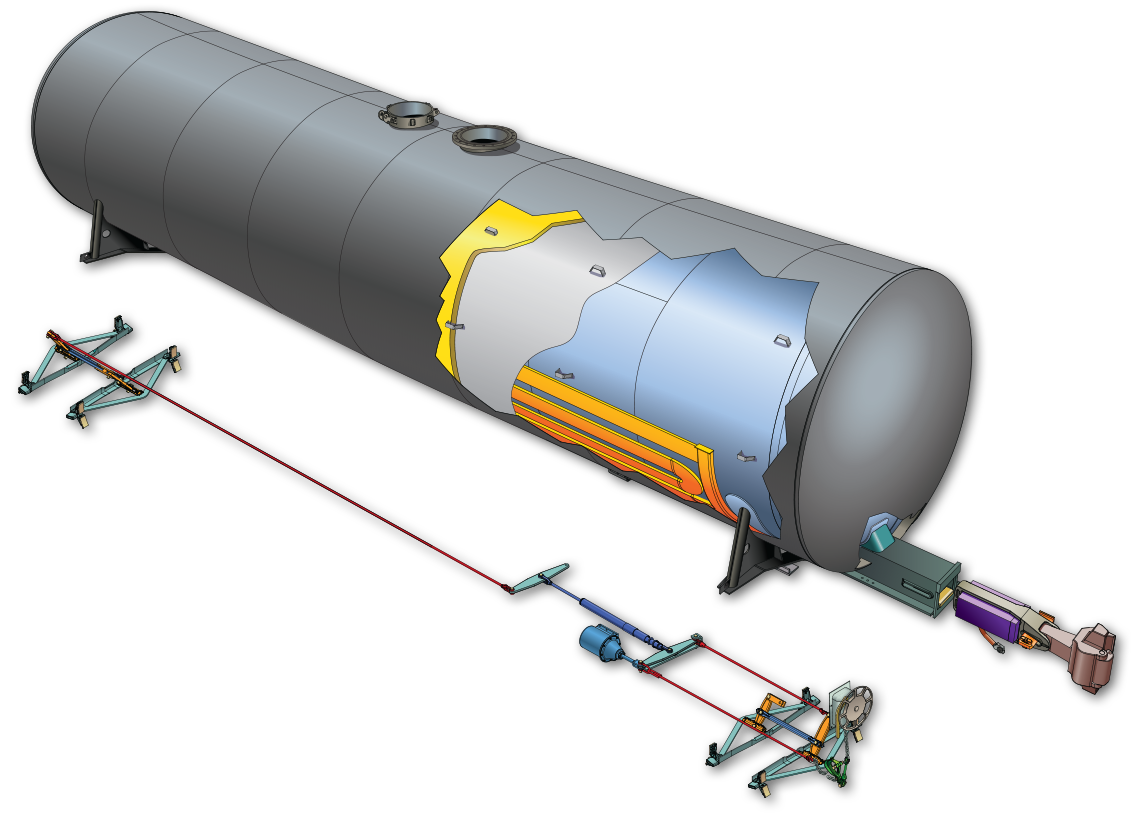
























Tank car trucks support the car on the rail and control the dynamic positioning of the flanged wheels on the rail. Motion control trucks, the UTLX standard for new car construction, are engineered to provide stabilization and damping during normal train operations. Performance greatly depends on side-bearing preload and side-frame design, which make the trucks follow the tracks and prevents them from oscillating side-to-side at higher speeds. This condition, known as truck hunting, is countered by the installation of constant-contact side bearings that limit car body sway-and-roll. The current design results from decades of engineering effort to provide the most cost-effective suspension package.
Each truck includes side frames that contain the spring sets and position the axles and roller bearings, and a truck bolster that spans between the side frames and provides a center bowl. The center bowl supports the tank bolster and allows the trucks to "steer" based on the profile of the rail and the wheel tread. The truck components fit together into a unit that is held together by spring tension, the weight of the tank, and gravity. A vertical center pin through the center bowl locates the tank bolster. It, too, relies on gravity. The machined center plate, which is attached to the tank, mates the center bowl with the center pin as a guide. These components are all designed so the trucks will disconnect from the tank in case of a derailment.
UTLX uses cast steel wheels that are pressed onto the solid axles. Outboard of the wheels are roller bearings that provide long service. However, it is the very low rolling resistance of steel wheels on steel rails that delivers a key advantage for shipping by rail. Once it is rolling, a tank car is an extremely efficient vehicle for long distance shipments.